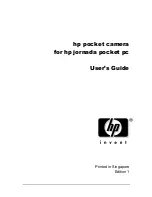
Reference Information
Samsung Electronics
14-37
14-3-5 xD-Picture Card-only used for digital cameras
Olympus and Fuji Film decided on the standard. Based on this, Toshiba didn’t adapt any copyright protection
technology so as not to burden users with redundant costs.
The thickness increased by about half the size of SmartMedia.
Its compact size meant that the connector could also be substantially downsized.
The thickness was increased to more easily increase capacity by stacking the chips in the same way as SD
Memory cards.
14-3-6 CompactFlash- increased speed, increased capacity
Lexar Media researched the data transfer method of Compact Flash speedup technology and developed Write
Acceleration (WA) technology. They are now producing substitute products for the market.
With this technology, the transfer speed can increase more than 40% over its previous speed.
However, to use WA technology, not only is Compact Flash necessary but the mechanical parts should also be
compatible. There are Single Lens Reflex digital cameras from Nikon and Kodak that are compatible with WA.
General Compact Flash records data through the CPU. This method is called Programmed I/O (PIO).
PIO produces interrupts that require CPU processing for every 1 sector recording. (Picture2).
WA’s recording is integrated on many sectors and so reduces the number of interrupts and overheads in the
process.
For an even faster method, Direct Memory Access (DMA) adapted standard, which is a method of existing
hard disk data transfer, is being researched. DMA method records data without bothering the CPU.
Therefore DMA can actualize even faster data transfer because it can reduce overhead during recording even
more than the WA method.
Compact Flash can stack up many flash memory chips, therefore it is ahead of other sizes in increased capacity.
As of now (February, 2003), there are 1GB products in the market.
For high capacity products, there is microdrive, with a thickness increase from 3.3mm to 5mm, which has a
built-in compact hard disk in Type II Compact Flash. IBM Japan developed it.
Currently, however, it is the product of Hitachi Global Storage Technologies America that merged with hard
disk drive operations of IBM Japan. Microdrive will appear in the market in the fall of 2003 with 4GB and 2GB
models. When its capacity was increased, it reduced the existing head size by 40% which is for reading and
writing, therefore the head working area increased. Also, by using “Pixie Dust”, which is disc coating
technology, it substantially improved the recording density. Not only was the capacity improved but also data
transfer speed improved by 50%.
The 4GB microdrive, however, needs to be in correspondence with the hardware.
Current hardware adapts FAT16 to their memory card file system.
Therefore, it only recognizes up to 2GB. To use the 4GB microdrive, the hardware should be compatible with
FAT32.
Содержание VP-D451
Страница 10: ...Product Specification 2 4 Samsung Electronics MEMO ...
Страница 30: ...3 20 Alignment and Adjustments Samsung Electronics MEMO ...
Страница 46: ...4 16 Disassembly and Reassembly Samsung Electronics MEMO ...
Страница 66: ...Exploded View and Parts List 5 20 Samsung Electronics MEMO ...
Страница 83: ...Samsung Electronics 8 1 8 Wiring Diagram MEMORY STICK VP D453 I D6620I VP D454 I D455 I D6650I ...
Страница 84: ...Wiring Diagram 8 2 Samsung Electronics MEMO ...
Страница 86: ...PCB Diagrams 9 2 Samsung Electronics 9 1 Main PCB COMPONENT SIDE ...
Страница 87: ...PCB Diagrams Samsung Electronics 9 3 L708 Œ ˇ ˆ L704 L706 L717 L719 ...
Страница 88: ...PCB Diagrams 9 4 Samsung Electronics CONDUCTOR SIDE Fuse 1 25A 32V ...
Страница 94: ...PCB Diagrams 9 10 Samsung Electronics MEMO ...
Страница 114: ...Schematic Diagrams 10 20 Samsung Electronics This Document can not be used without Samsung s authorization MEMO ...
Страница 128: ...Troubleshooting 12 8 Samsung Electronics MEMO ...
Страница 140: ...Circuit Operating Description 13 12 Samsung Electronics MEMO ...
Страница 184: ...Reference Information 14 44 Samsung Electronics MEMO ...








































